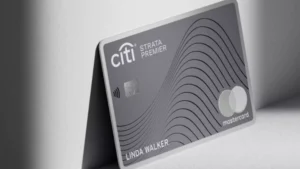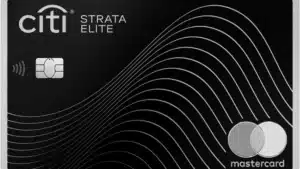Ever wonder how smart homeowners easily get through the mortgage process? I’ve seen many clients go from worried to confident about buying a home. They start by checking their credit score and saving for a down payment.
Starting your mortgage journey might seem hard, but don’t worry. I’m here to help you understand it. You’ll learn about credit scores, debt-to-income ratios, and closing costs. It’s time to learn the truth about mortgages.
We’ll explore different mortgage types, like those needing only 3 to 5 percent down. We’ll also look at VA and USDA loans that don’t require a down payment. I’ll guide you through each step, helping you fit these pieces into your financial plan. Get ready for a journey into the world of homebuying, where numbers tell stories and preapprovals lead to your dream home.
Understanding the Mortgage Basics
Starting your journey to homeownership means learning about mortgages. I’ll explain the key parts you need to know before exploring home loans.
What is a Mortgage?
A mortgage is more than a loan. It’s a secured loan for buying a property. The property is used as collateral. If you can’t pay, the lender can take the property.
It’s important to know your monthly payment, loan term, and interest rate. This helps you manage your commitment well.
Types of Mortgages Available
Choosing the right type of mortgage affects your finances. There are fixed-rate and adjustable-rate mortgages. Each changes your monthly payment differently.
There are also FHA, VA, and USDA loans. They offer special benefits for certain buyers. For example, FHA loans need lower down payments, which is good for first-time buyers.
- Conventional loans: Need at least a 3% down payment.
- FHA loans: Have low entry barriers, like credit scores as low as 580.
- VA loans: Give veterans benefits, like no down payment needed.
- USDA loans: Good for rural buyers, often with no down payment.
Determining What You Can Afford
Knowing how much house you can afford is key. You can use your debt-to-income ratio (DTI) to figure this out. A lower DTI looks better to lenders and can get you better loan terms.
Remember, owning a home also means extra costs like maintenance. Avoid being house poor by considering these costs.
To figure out what you can afford, think about:
- Your monthly income versus your debts.
- The mortgage loan terms, like interest rate and period.
- Other costs like property taxes, insurance, and private mortgage insurance.
Understanding these areas helps you deal with mortgage complexities. It brings you closer to owning a home.
Preparing Your Financial Profile
Starting my journey to own a home, I first focused on my financial profile. I looked at my credit score and debt. Here’s how I improved my finances.
Improving Your Credit Score
A good credit score means better mortgage rates. So, I worked on improving mine. I got my free annual credit report to find errors.
Fixing each mistake helped my score. I also lowered my credit use and paid bills on time. A score above 700 is very good.
Calculating Your Debt-to-Income Ratio
Then, I checked my debt-to-income ratio (DTI). It should be under 36%. I added up my monthly debts and income to find my DTI.
This helped me manage my money better. It also helped me plan for future home costs.
By paying attention to my credit and DTI, I got better mortgage offers. It also made me more aware of my finances. I keep learning to secure a stable future.
Starting the Journey: How to Get a Mortgage
Starting your journey to own a home is exciting. But, the mortgage process can seem scary. I learned that knowing your credit score and how much you can afford is key. Also, understanding the different loans is important.
First, check your financial health. Your credit score is a big part of this. You can get your score for free from big credit bureaus once a year. Fixing mistakes on your report can take up to six months.
To improve your financial health, I went to workshops. TD Bank offered sessions for veterans and first-time buyers. These helped me grasp the mortgage process and the need for prequalification and preapproval.
- Choosing a Mortgage Lender: Next, I picked a mortgage lender. I looked for one with good rates and clear advice. They helped me choose the right mortgage for me.
- Types of Mortgage Loans: I looked at different loans. Conventional loans need only 3% down, and FHA loans are good for those with lower credit. VA loans are great for veterans, needing no down payment.
By going to workshops and talking to advisors, I gained confidence. This helped me understand home financing better. I felt ready to move forward in the mortgage process.
Whether it’s your first home or you’re improving your strategy, be informed. With the right help, the mortgage process can be smoother.
The Importance of Getting Preapproved
In today’s real estate market, getting preapproved for a mortgage is key. It’s not just a first step but a big advantage when bidding on homes. Let’s explore why preapproval is important and how it differs from prequalification.
Difference Between Preapproval and Prequalification
Preapproval and prequalification might seem the same, but they’re not. Prequalification is the first step. It gives a rough idea of what you might borrow based on unverified info. It’s quick and free, showing a basic mortgage possibility.
To get preapproved, I had to submit detailed financial documents. This showed lenders my true financial situation. Mortgage preapproval is more reliable and shows sellers you’re serious, unlike prequalification.
Why Preapproval Matters
Having a preapproval letter changed the game. With low home inventory and fierce competition, it makes sellers take your offers seriously. It shows they’ve checked your finances and a lender will likely back your purchase.
Preapproval also makes the mortgage application process faster. You’re ready with most documents, making offers and closing deals quicker. This is key in a fast-paced market where timing is everything.
- It shows the price range of homes you can afford, helping you focus your search.
- Being preapproved makes you stand out in multiple-offer situations, common today.
- It helps close deals faster, benefiting both you and the seller.
Getting loan approval through preapproval prepares you for the buying process. It also makes you a preferred buyer in competitive markets. It’s a big step towards owning a home that I recommend to all buyers.
Finding the Right Home and Making an Offer
Getting a mortgage preapproval is exciting. It means you’re one step closer to owning a home. Now, it’s time to start looking for the perfect place. You need to know the housing market well and find homes that fit your taste and budget.
Working with a Real Estate Agent
Choosing a real estate agent can be a big help. They know a lot about neighborhoods and can tell you about the market. They can also help you find good deals and make a strong offer.
Understanding the Market
It’s important to understand the housing market. Home prices vary a lot, from $796,175 in Westchester County, New York to $281,853 in Lincoln, Nebraska. Knowing this helps you figure out what you can afford.
When it’s time to make an offer, having good information helps. Your agent and current market data give you an edge. You’re not just making an offer; you’re negotiating a deal that’s right for you.
Working with a professional, understanding the market, and preparing to make an offer makes buying a home easier. It’s a journey that leads to owning your dream home. So, get ready and soon you’ll have the keys to your new place.
Choosing the Perfect Mortgage for Your Needs
When you buy a home, picking the right mortgage is as important as finding the right house. You have many mortgage options and lender options to choose from. This choice can greatly affect your money future. I’ll explain the main differences between fixed-rate mortgages and adjustable-rate mortgages, and conventional mortgages and government-backed loans. This will help you pick the best one for you.
Fixed-rate vs. Adjustable-rate Mortgages
A fixed-rate mortgage keeps your interest rate the same for the loan’s life. This means your monthly payments stay the same. It’s good if you like knowing what to expect every month.
Adjustable-rate mortgages start with a lower rate that can change later. This might make your payments lower at first. But, the rate could go up, which might increase your payments. ARMs are best if you plan to sell or refinance soon, or if you think rates will drop.
Conventional Loans vs. Government-backed Loans
Conventional mortgages aren’t insured by the government. They offer more flexibility but often need better credit and a bigger down payment. If you put down 20%, you won’t have to pay private mortgage insurance (PMI).
Government-backed loans like FHA, VA, and USDA loans have special benefits. FHA loans are good for those with lower credit or smaller down payments. VA loans help military folks and veterans by covering up to 100% of the loan. USDA loans help rural buyers with little to no down payment. These loans are great for first-time buyers or those with less money.
Knowing your mortgage options well helps you make a smart choice. Whether you choose a fixed-rate mortgage, an adjustable-rate mortgage, a conventional mortgage, or a government-backed loan, each has its own benefits. Picking the right one can save you money and stress, making owning a home a reality.
Submitting Your Mortgage Application
Getting into homeownership starts with the mortgage application. It’s key to know the steps and have all your financial documentation ready. This helps lenders make a good decision.
Required Documentation
The list of required documentation for a mortgage is long. Lenders check your income, assets, job history, and credit. You’ll need:
- Identification documents like your driver’s license or passport
- Pay stubs from the last 60 days to prove income stability
- Two years of federal tax returns to verify income history
- Recent bank statements and investment account statements to show current financial status
mortgage interest rates can change your payments. So, it’s important to show your real financial situation to get a good rate.
Understanding the Approval Process
After you submit your mortgage application, the approval starts. An underwriter checks your documents to see if you qualify. They look at your debt, credit, and job.
Within three business days, you get a loan estimate. It shows your expected interest rate, monthly payments, and closing costs.
Mortgage applications can be tough, but knowing what’s needed helps. Start gathering your financial documentation early. It makes the whole process easier.
Navigating the Closing Process
Getting ready for the final step in buying a home is exciting. You need to know about closing costs and what to do next. It’s a big moment when you get your keys, but there are steps to take first.
Closing Costs and How to Prepare for Them
Homebuyers often find out about many fees during closing. These costs can be 2% to 5% of the home’s price. They include things like appraisal fees and insurance.
- Mortgage Insurance: You might need this if you put down less than 20%.
- Property taxes: You might pay some at closing, depending on where you live.
- Appraisal and origination fees: These help the lender understand the property’s value and process your loan.
It’s smart to save up and plan for these costs. Getting pre-approved for a mortgage can also help. It can make the process faster and less stressful.
The Final Steps Before Home Ownership
The closing process ends when you sign the papers and get the keys. You’ll do a final walk-through to check the property. Then, the closing meeting lasts about an hour or two. You’ll sign the mortgage and title documents there.
It’s important to know what you’re signing, like the Closing Disclosure. It shows your loan details and costs.
After signing and paying the costs, the house is yours. As a homeowner, you’ll have to pay for things like mortgage, insurance, and taxes.
The end of buying a home might seem scary, but it’s not. With good planning and knowing the costs, it’s a great moment.
Post-Closing: Managing Your Mortgage
After closing on your new home, managing your mortgage is key. You need to understand your monthly payment. This includes the principal, interest, property taxes, insurance, and HOA fees.
It’s important to keep track of your mortgage payments. Missing a payment can hurt your credit score a lot. Knowing your property taxes and insurance costs is also vital for budgeting.
Understanding Your Monthly Payments
Your monthly payment has different parts. The principal pays off your loan, and the interest is the lender’s fee. Some of your payment goes to an escrow account for taxes and insurance. This makes managing these costs easier.
When and How to Consider Refinancing
Refinancing might be smart if interest rates drop or your credit improves. It can lower your monthly payment or save on interest. But, think about the closing costs to see if it’s worth it.
Being proactive with your mortgage is important. Knowing when to refinance can help you avoid financial trouble. As a homeowner, staying on top of your finances keeps your home secure and valuable.
Conclusion
Starting your journey to own a home is exciting but also complex. You’ve learned the key steps, from figuring out what you can afford to getting preapproved. With a good credit score and a manageable debt-to-income ratio, you’re ready to show lenders you’re serious.
Buying a home is more than just saving for a down payment. You also need to plan for closing costs, which can be 2% to 6% of the loan. Plus, there are annual maintenance costs to consider. A smart budget will help you stay financially stable as you start your homeownership journey.
Every part of your financial life, from savings to credit score, matters when applying for a mortgage. Knowing your options, like FHA, VA, and USDA loans, is key. With this knowledge, you’re better prepared to apply for a mortgage and start your homeownership journey.







